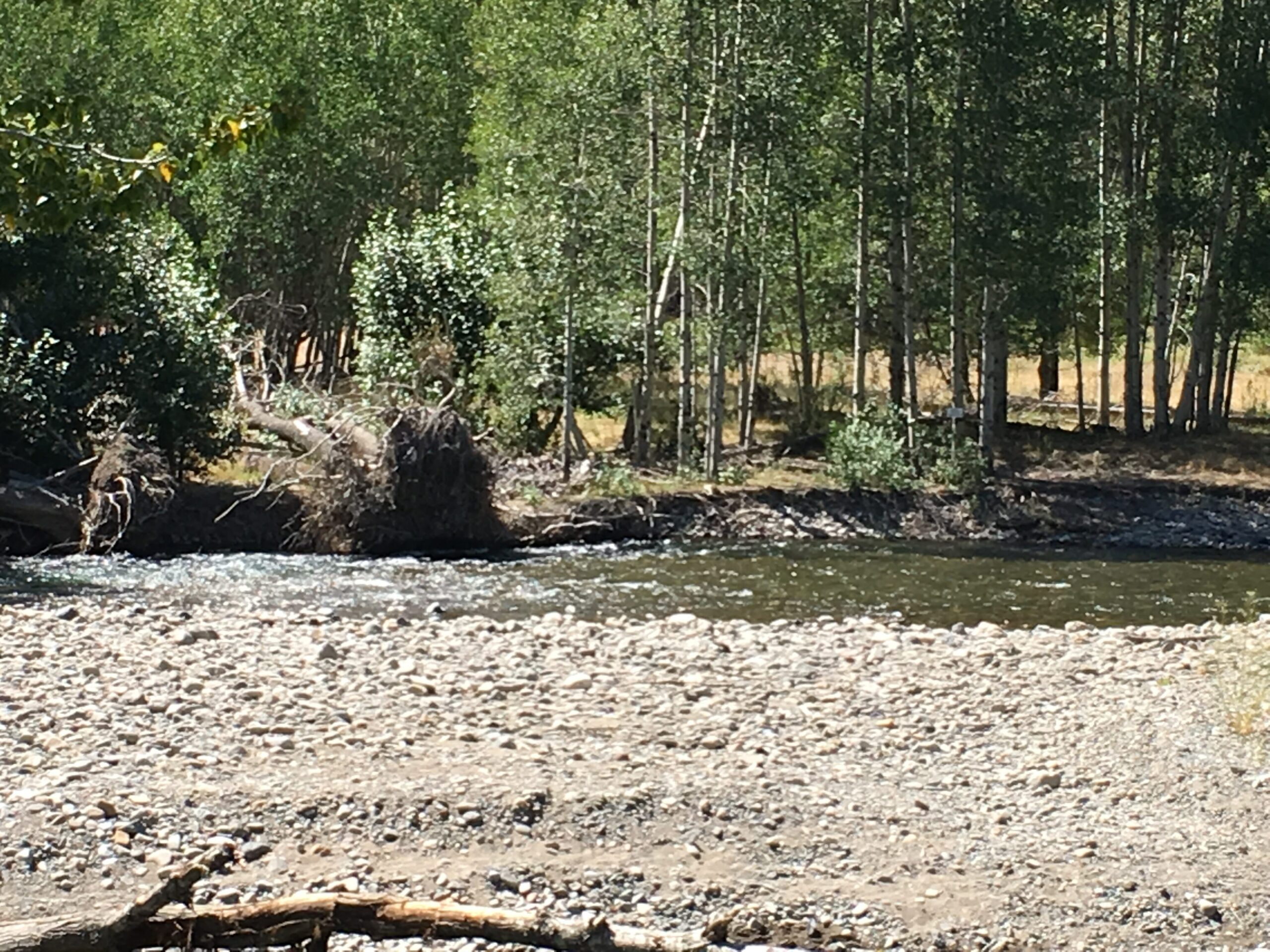Eroding banks along the Bridge to Bridge project area
By Chris Wood
The sign behind the two-person Trout Unlimited office in Hailey, Idaho, reads, “Parking for Trout Unlimited only. If towed, call Dick York Towing.” It is an inside-Hailey joke as Keri York’s Dad ran Dick York Towing—the only towing business in the Big Wood River valley—until he sadly passed away several years ago. Keri’s deep roots in the valley make her the perfect person to run the Big Wood Home River Initiative, whose goal is to help restore the Big Wood River to its former glory as a wild trout fish factory.
A watershed assessment that we conducted with our partners the Wood River Land Trust and the Idaho Nature Conservancy, indicated that over the years, development had caused the Big Wood to lose access to about half of its floodplain—and the namesake large wood that provides habitat and structure for trout.
In addition, the river was channelized in the 1950s and 60s, further compromising its health. Aerial photographs indicate that the loss of meanders shortened the length of the river by an astonishing 1.7 miles since the 1940s. More recently, fires and subsequent floods took a toll on water quality by moving ash from the mountains into the river.
Like all rivers, if given half a chance, the Big Wood can and will respond to restoration. Our job is to help the river recover its natural resiliency, so it is better able to withstand the increasingly common, and increasingly intense, floods, fire and drought.
Consider the case of Rock Creek, a tributary to the Big Wood. Over the past three years, Trout Unlimited secured a grant from the National Fish and Wildlife Foundation; Idaho TNC from the Department of Environmental Quality; and the Wood River Land Trust from Blaine County to restore Rock Creek and associated tributaries.
The images below give a sense of what the river looked like before and after restoration.

Before and after work on Rock Creek.
Once the Idaho Transportation Department fixes a perched culvert across Highway 20 in 2019, about 89 miles of spawning and rearing habitat for wild trout will be made accessible to the Big Wood. This spring, the Hemingway chapter paid to bus a group of school-kids from Gooding, Idaho, to help with tree and shrub planting on the restored streams.
Keri has similarly ambitious projects planned on the Big Wood. One, for example, would repair an irrigation diversion that was damaged in flooding in a way that allows for irrigation while recreating floodplain habitat, and importantly, lessening the need to bull-doze so called “push-up” dams in the middle of the river for irrigation purposes. Another is the Bridge to Bridge project that would help to create floodplain and in-stream habitat while simultaneously protecting a hospital and a major bridge from flooding.
These projects are expensive, and they require private capital that we can match with county, state, federal, and foundation funding. The Big Wood River literally defines the communities of Bellevue, Hailey, Sun Valley, Ketchum, and Picabo. Our hope is that the vision of restoring the Big Wood to its former glory while helping to protect adjacent communities from flooding will drive private philanthropic interest and support its recovery.
Keri’s work reminds me of author and scholar, Charles Wilkinson’s belief that “It should not be so hard to mesh the needs of the lands and waters and the people. They ought to be the same. In the final analysis, they are the same.”
Chris Wood is the president and CEO of Trout Unlimited. He lives in Washington, D.C., and works from TU’s Arlington, Va.-based headquarters.



